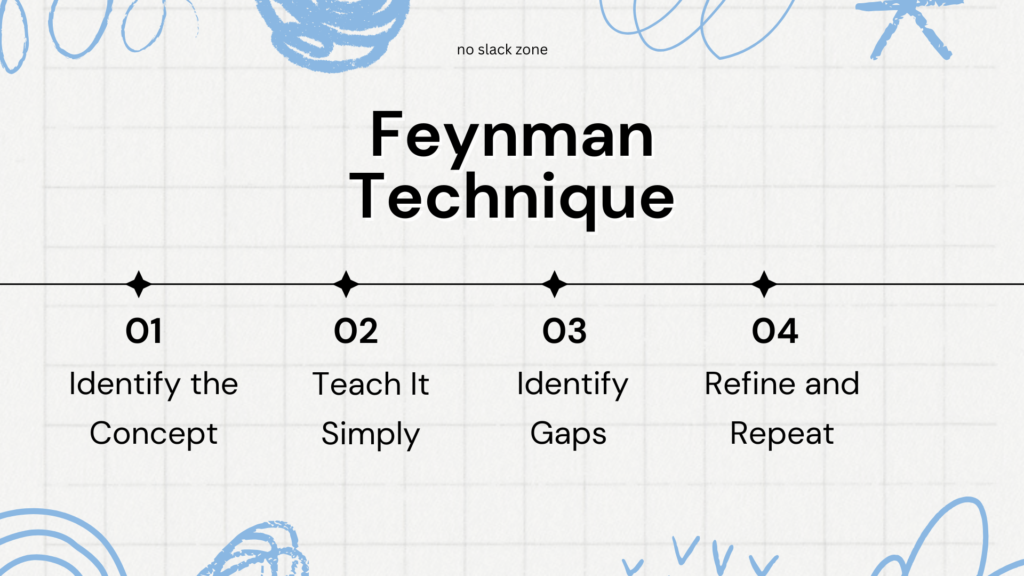How to Understand Complex Concepts Without Losing Your Sanity
In todays post we will learn how to How to Understand Complex Concepts as a student while keeping our sanity.
You may have experienced it before. Gazing at a textbook page, for what seems like ages with words blurring in front of you like a language you never intended to study for..
Your coffee has turned cold. Your annoyance is increasing as that idea you’re attempting to comprehend appears more difficult, than ever before.. However here’s something that could catch you off guard ; your mind can truly grasp the these concepts effectively you just don’t know it .
By the time you reach the end of this guidebook and absorb its contents fully you will possess the tools to turn any topic from a mental puzzle, into a conquerable domain.
Take It One step at a Time
Ever tried eating a whole pizza in one go? Aside from the indigestion, it’s downright impossible. Complex concepts are no different—they’re not meant to be tackled all at once. The first step to mastering difficult material is to break it down into smaller, digestible pieces.
Let’s say you’re trying to wrap your head around quantum mechanics (because who doesn’t?). Instead of diving headfirst into Schrödinger’s cat, start with the basics. Learn what “quantum” means. Then move on to understanding simple terms like “wave-particle duality” and “superposition.”
Breaking a big topic into smaller parts makes it less overwhelming and gives your brain space to process each idea individually. Think of it as assembling a jigsaw puzzle; piece by piece, the picture becomes clearer.
Once you’ve identified the pieces, it’s important to set mini-goals. For example, today, you might focus solely on understanding what a quantum is. Tomorrow, you tackle superposition. By doing this, you’re building a solid foundation that will support more complex ideas as you progress.
Your Brain Loves Pictures (And So Will You)
Here’s a fun fact: your brain processes images 60,000 times faster than text. That’s right—pictures aren’t just pretty; they’re powerful tools for learning. When grappling with a tough concept, try to visualize it.
Mind maps are an excellent way to make sense of complicated topics. Start with the main concept in the center, then branch out with subtopics and their connections.
For example, if you’re learning about ecosystems, place “Ecosystem” in the center, then create branches for “Producers,” “Consumers,” “Decomposers,” and so on. Seeing the relationships between ideas helps them stick in your mind.
Diagrams and charts can be equally effective. If you’re tackling biology, draw a diagram of the cell and label its parts.
Learning physics? Sketch out a free-body diagram to understand forces acting on an object. And don’t underestimate the power of infographics; platforms like Pinterest or academic blogs are treasure troves of visually engaging content that simplifies even the most convoluted topics.
Analogies, Metaphors, and Stories—Oh My!
Have you ever tried explaining the Internet to someone who didn’t grow up with it? You probably used analogies like “It’s a library where you can instantly borrow books” or “It’s like a highway for information.” Analogies are like cheat codes for your brain, helping you understand new ideas by relating them to familiar ones.
Take calculus, for example. Derivatives can feel like abstract gibberish until you think of them as instant speedometers. They tell you how fast something is changing at a specific moment, just like your car’s speedometer tells you how fast you’re going. Suddenly, the concept doesn’t seem so alien anymore.
Stories work wonders, too. Picture a group of atoms at a party. Some are the wallflowers, perfectly happy to stay where they are (stable atoms). Others are the life of the party, always mingling and forming bonds with new people (reactive atoms). Now, you’ve just given life and personality to what might otherwise be a dull chemistry lesson.
Use the Feynman Technique to Simplify Everything
Richard Feynman, the legendary physicist known for his ability to explain complex concepts with remarkable clarity, once said, “If you can’t explain it simply, you don’t understand it well enough.
Feynman Technique involves breaking down any concept and teaching it as if you were explaining it to a child.
Here’s how it works:
- Step One: Identify the Concept
Choose the topic you want to understand. Let’s say it’s Newton’s Laws of Motion. Write the name of the concept at the top of a blank sheet of paper. - Step Two: Teach It Simply
Explain the concept as if you’re teaching it to a 5-year-old. Avoid jargon and fancy words. Instead of saying, “An object in motion stays in motion unless acted upon by an external force,” you might say, “If you kick a ball, it’ll keep rolling until something like grass or a wall stops it.” - Step Three: Identify Gaps
As you explain, you’ll notice areas where your understanding is shaky. Maybe you realize you don’t fully grasp why objects stop when there’s friction. That’s your cue to go back, review, and fill in the gaps. - Step Four: Refine and Repeat
Once you’ve clarified the gaps, refine your explanation. The goal is to make your description so simple that even a child could understand it.
This technique works because it forces you to process information deeply, instead of just memorizing terms. And let’s be honest if you can explain quantum mechanics to a 5-year-old, you’ve probably mastered it.
Build Bridges to What You Already Know
Your brain is a master of connections. It thrives on linking new information to things it already understands. That’s why one of the best ways to learn complex concepts is to find parallels with what you already know.
For instance, if you’re learning about neurons, think of them as email servers. They send messages (impulses) to different parts of the body. Or if you’re studying the water cycle, imagine it as a giant recycling system: rainwater fills rivers, rivers lead to oceans, and evaporation starts the process again. By creating these mental bridges, you make the unfamiliar feel familiar, which makes it much easier to grasp.
Practice, Practice, Practice
Let’s be honest: you can’t truly understand something without putting it into practice. Reading about a concept is one thing, but applying it is where the magic happens.
One of the best ways to solidify your understanding is by teaching it to someone else. Whether it’s a friend, a family member, or even your cat, explaining a concept in simple terms forces you to clarify your own understanding. If you can’t explain it clearly, it’s a sign you need to revisit the material.
Another powerful technique is solving problems or completing exercises related to the topic. If you’re learning math, do those practice problems. If you’re studying history, write a short essay about the events you’ve learned. Application turns abstract ideas into concrete knowledge.
Conclusion
Embrace the Challenge
Learning complex concepts is never easy, but it’s always rewarding. By breaking things down, using visuals, creating analogies, leveraging the Feynman Technique, and practicing, you can turn even the most intimidating topics into stepping stones toward mastery. Remember, it’s not about being a genius; it’s about being curious and persistent.
Did you know that Einstein’s Theory of Relativity came to him while imagining riding a beam of light? What’s the weirdest analogy or technique you’ve used to understand a concept? Drop your thoughts in the comments I’d love to hear your stories! If you’re looking for more tips and into effective study methods, be sure to check out our other articles. Happy learning.






